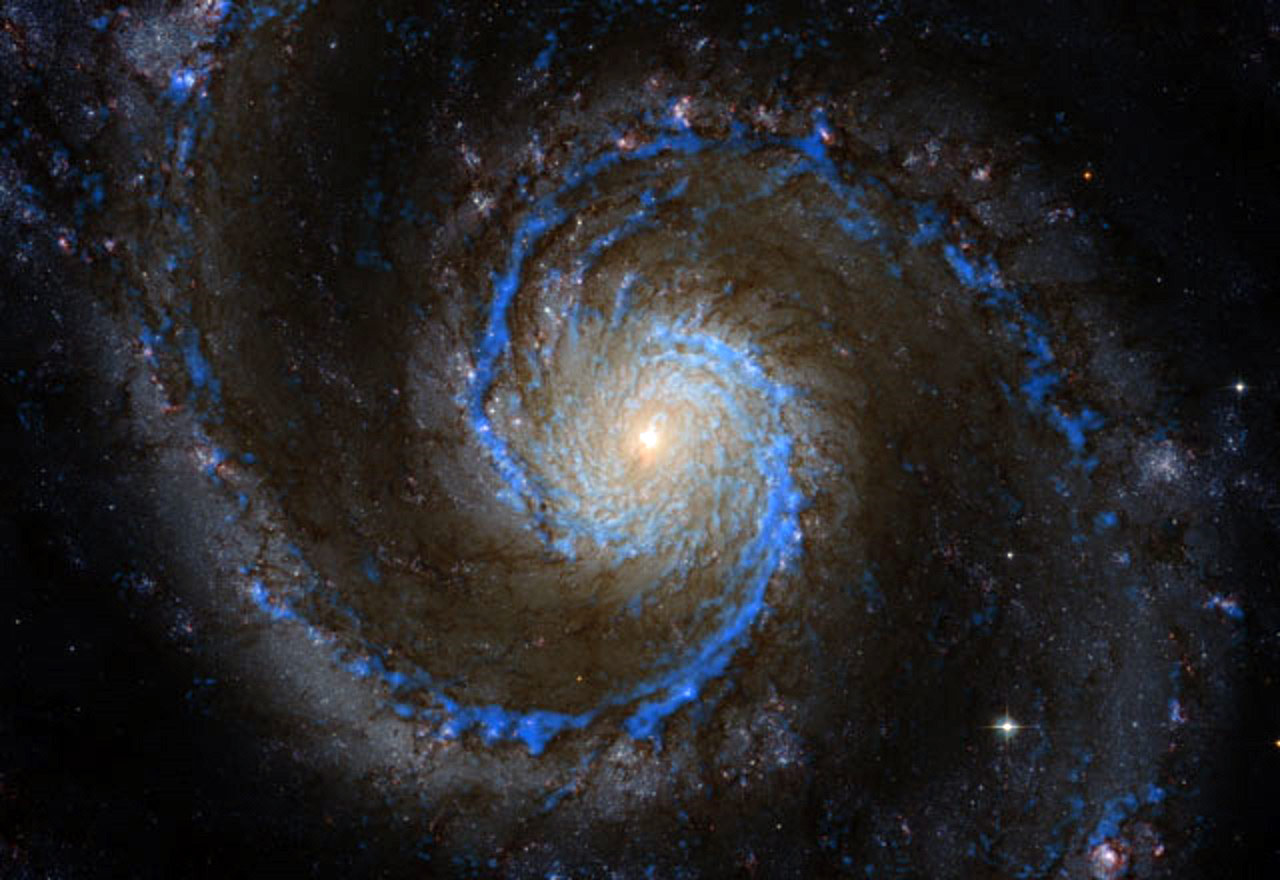
Massive stars (>8 M⊙ and 103 L⊙) have a profound impact on their environment. They shape the interstellar medium (ISM) with their strong stellar winds and ionizing radiation, regulating star (and planet) formation, and ultimately drive the chemical and physical evolution of their host galaxies. However, our understanding of the initial conditions required for their formation and the processes involved in the early evolution of massive stars are still rather poor.
Our ability to make significant progress in this field has been dramatically enhanced in recent years with the completion of a large number of Galactic plane spectral-line and continuum surveys that cover the whole wavelength range from the near-infrared to the radio. This project will exploit these multi-wavelength surveys to quantify the star formation across the inner Galactic disk and provide a truly global view of star formation throughout the Milky Way.

Evolutionary sequence for high-mass stars. The starting point is the clumpy structure of a giant molecular cloud (far left) which begins to collapse due to gravity to form a protostar. The protostar continues to accrete mass increasing in mass until it is massive enough that the radiation emitted can ionize the surrounding gas resulting in the formation of a HII region. The HII region expanding into the surrounding medium until it disperse its natal material (far right). Image credit: Cormac Purcell.
Observational Projects:
There are two project that will focus on exploiting these Galaxy-wide surveys to:
- Determine the evolutionary sequence for massive star formation, the statistical lifetimes for each stage and the initial conditions
- Use the Galactic distribution of these massive star forming clumps to construct a 3-dimensional map of the distribution of the dense gas across the Milky Way and evaluate the role the spiral arms and environment plays in the star formation process.
For more information please contact Dr James Urquhart.
Computational Projects:
The widely accepted paradigm for the formation of solar-type stars via spherical or disc accretion predicts an evolution from cores to protostars, and finally pre-main sequence stars. The peak of the Spectral Energy Distribution shifts from wavelengths longward of 100 microns for Class 0 objects toward shorter wavelengths as the Young Stellar Object (YSO) emerges from an obscuring cloud approaches the Main Sequence. Establishing a similar scenario for high-mass YSOs is much more difficult due to the clustered environments in which they are born and to the large characteristic distances, exceeding one kiloparsec.
- The proposed research will involve computer modelling of the evolution of young stars and their environments. The results will be compared to the data to generate a new interpretation and predictions.
For more information please contact Prof. Michael Smith.